Abstract
A 1,280-day laboratory simulation of the “landfarming” process explored the fate in soil of polynuclear aromatics (PNAs) and total extractable hydrocarbon residues originating from the disposal of an oily sludge. In addition to the measurement of CO2 evolution, periodic analyses of PNAs and hydrocarbons monitored biodegradation activity. The estimation of carbon balance and of soil organic matter assessed the fate of residual hydrocarbons. Seven sludge applications during a 920-day active disposal period were followed by a 360-day inactive “closure” period with no further sludge applications. A burst of CO2 evolution followed each sludge addition, but substantial amounts of undegraded hydrocarbons remained at the end of the study. Hydrocarbon accumulation did not inhibit biodegradation performance. Conversion of hydrocarbons to CO2 predominated during active disposal; incorporation into soil organic matter predominated during the closure period. In this sludge, the predominant PNAs were degraded more completely (85%) than total hydrocarbons. Both biodegradation and abiotic losses of three- and four-ring PNAs contributed to this result. Some PNAs with five and six rings were more persistent, but these constituted only a small portion of the PNAs in the sludge. The study confirmed that the microbially mediated processes of mineralization and humification remove sludge hydrocarbons from soils of landfarms with reasonable efficiency.
Full text
PDF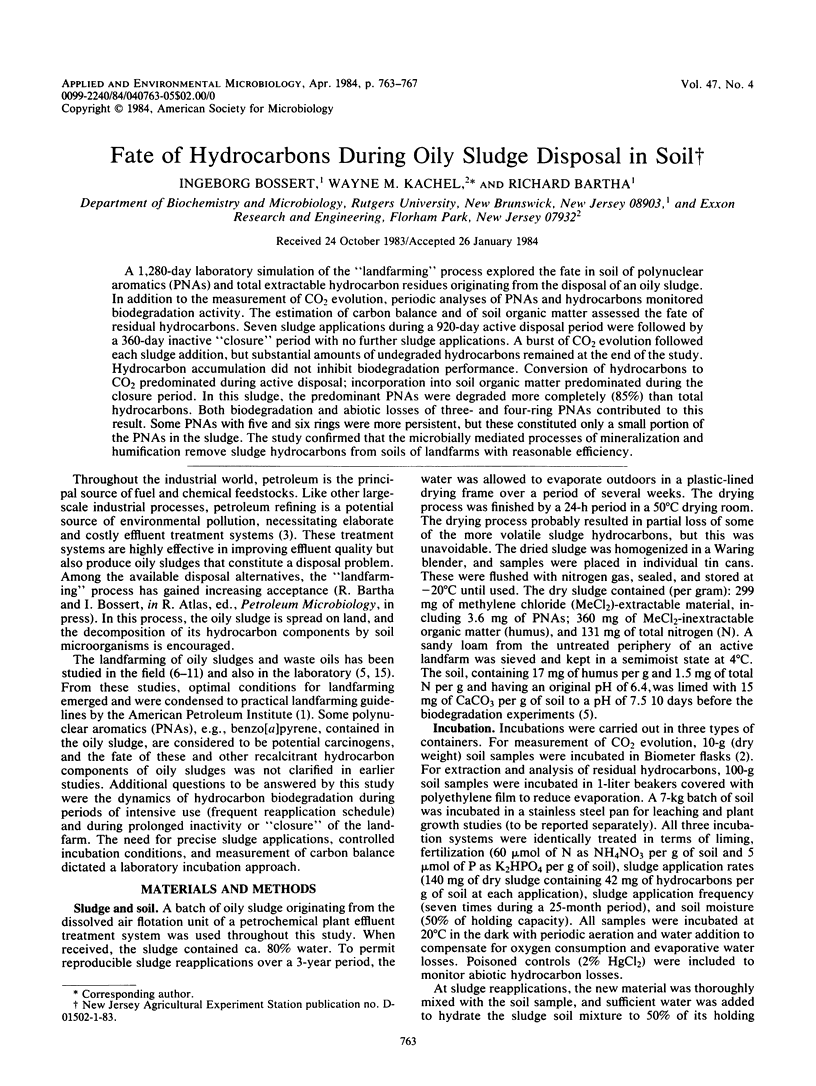
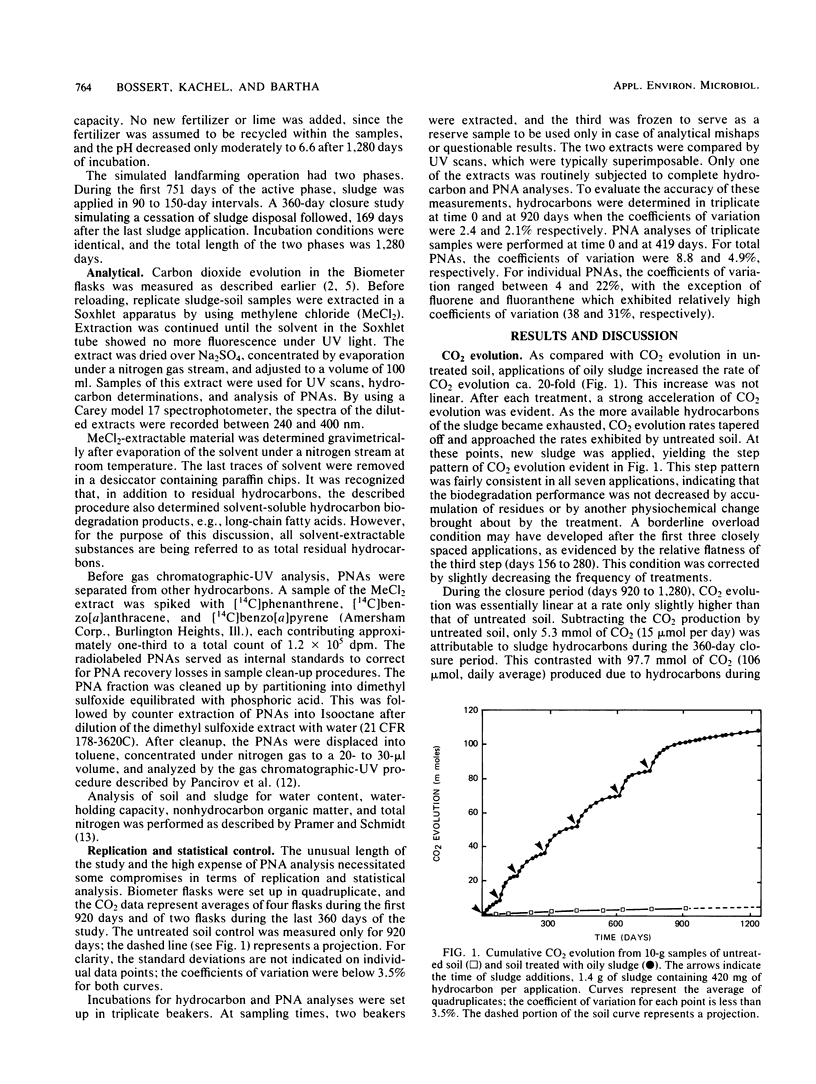
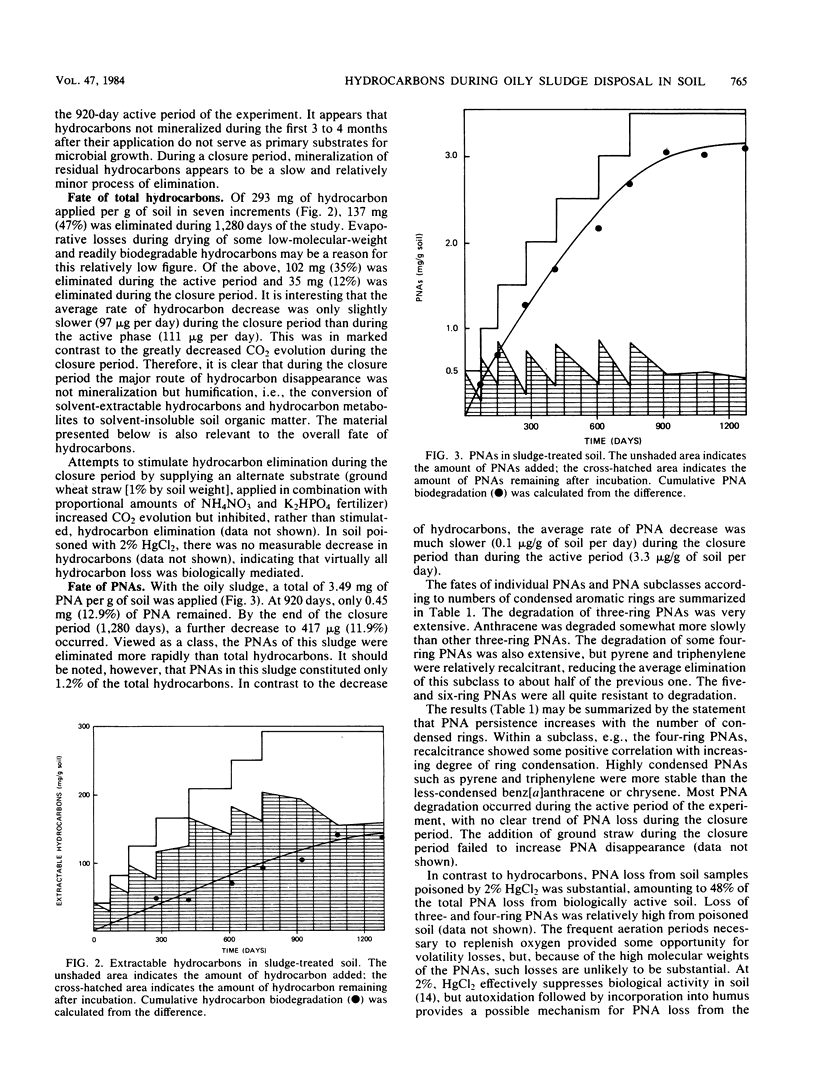
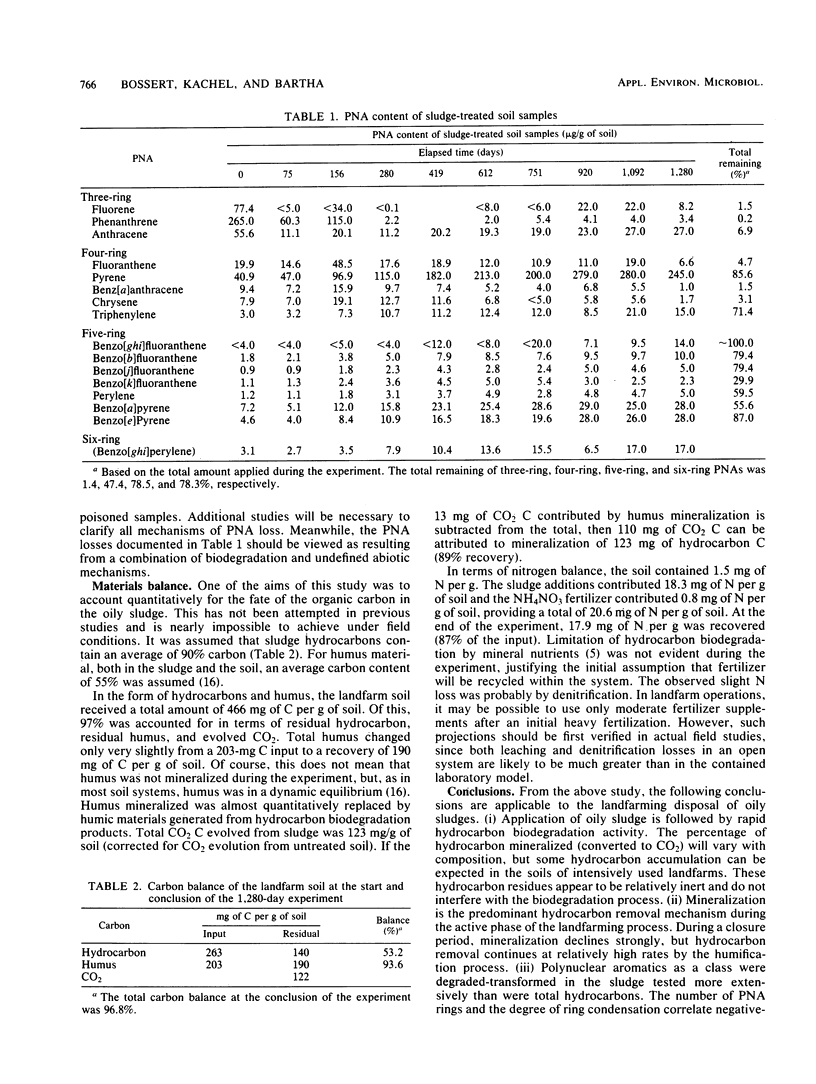
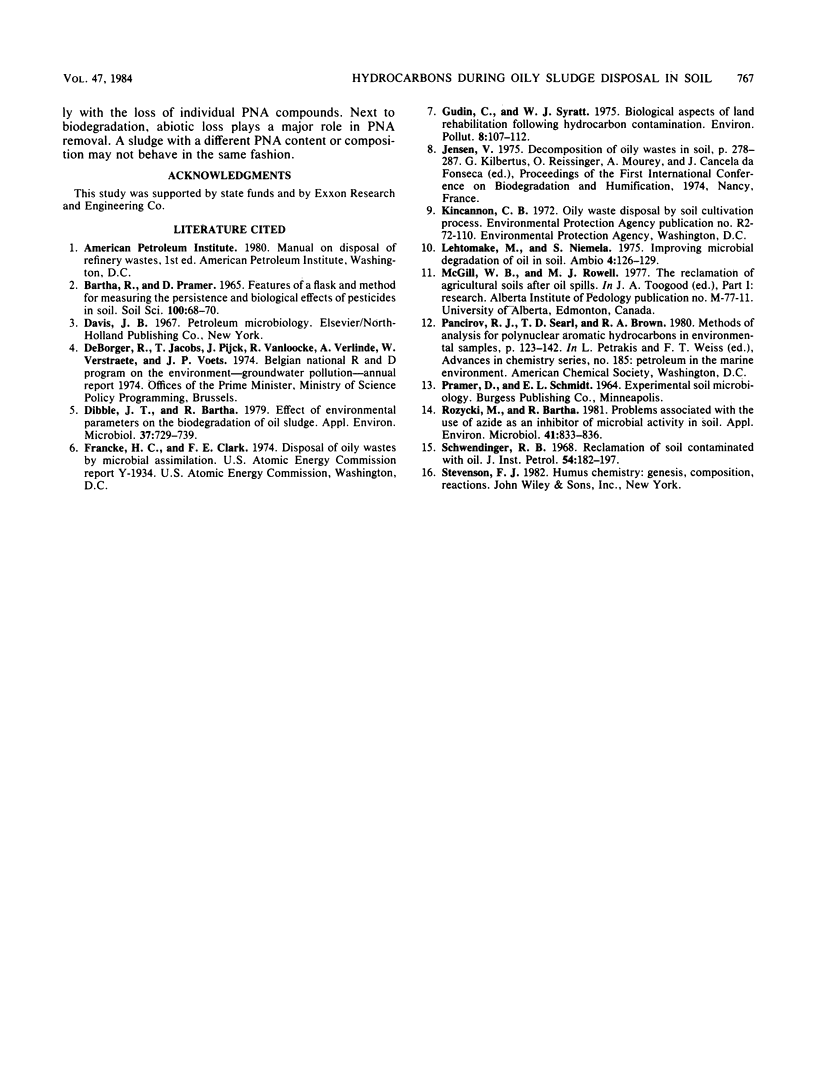
Selected References
These references are in PubMed. This may not be the complete list of references from this article.
- Dibble J. T., Bartha R. Effect of environmental parameters on the biodegradation of oil sludge. Appl Environ Microbiol. 1979 Apr;37(4):729–739. doi: 10.1128/aem.37.4.729-739.1979. [DOI] [PMC free article] [PubMed] [Google Scholar]
- Rozycki M., Bartha R. Problems associated with the use of azide as an inhibitor of microbial activity in soil. Appl Environ Microbiol. 1981 Mar;41(3):833–836. doi: 10.1128/aem.41.3.833-836.1981. [DOI] [PMC free article] [PubMed] [Google Scholar]


